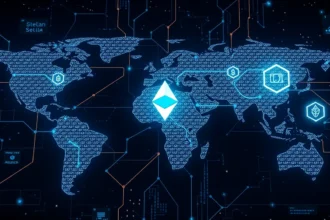Ethereum took a major step forward on Wednesday, March 25, 2025, as the final test of its much-anticipated Pectra upgrade went live on the newly launched Hoodi testnet. This upgrade, the most significant update to the Ethereum blockchain in over a year, promises to streamline the developer experience and introduce user-friendly enhancements. With the Hoodi test now in motion, the crypto community is watching closely—especially after earlier hiccups on other testnets—to see if Pectra is ready to roll out on the mainnet in just 30 days.
Rocky Road to the Final Test
The journey to this point hasn’t been smooth. Before Hoodi, Ethereum developers ran the Pectra upgrade through two prior testnets—Holesky and Sepolia—both stumbled at the finish line, failing to finalize as planned. Those setbacks raised concerns among stakeholders and ecosystem participants, prompting the creation of the Hoodi testnet as a final proving ground. Wednesday’s test was essentially the dress rehearsal, a last chance to iron out kinks before the upgrade hits Ethereum’s live network.
Unlike its predecessors, the Hoodi testnet seems steady so far. Developers have agreed that if this test runs without a hitch, they’ll monitor the upgrade’s performance for roughly 30 days before flipping the switch on the main net. For Ethereum enthusiasts, this timeline signals that Pectra could be live as early as late April 2025—assuming all goes according to plan.
What’s New with the Pectra Upgrade?
So, what’s all the buzz about? The Pectra upgrade isn’t just a routine patch—it’s a game-changer that makes Ethereum more accessible and versatile. One standout feature is the addition of smart contract functionality to wallets. This tweak allows wallet developers to roll out creative, convenience-driven tools, like letting users pay transaction fees with cryptocurrencies other than ETH. Imagine covering gas costs with stablecoins or other tokens; it’s a small shift that could make a big difference for everyday users.
Beyond that, Pectra focuses heavily on improving the developer experience. The upgrade bundles a series of code changes designed to simplify building on Ethereum, making it easier for coders to create apps and tools that power the ecosystem. The behind-the-scenes work might not grab headlines but keeps Ethereum competitive in the fast-moving world of blockchain tech.
Why Testnets Matter
Testnets like Hoodi are essentially sandbox versions of a blockchain for those new to the crypto space. They let developers experiment with major updates in a low-risk setting, spotting and squashing bugs before they can wreak havoc on the real network. Think of it like a flight simulator for pilots—Hoodi gives the Ethereum team a safe space to stress-test Pectra’s code, ensuring it’s ready for prime time.
The stakes are high with this one. After the Holesky and Sepolia tests fell short, the pressure was on for Hoodi to deliver. A smooth run here could restore confidence and set the stage for a seamless mainnet launch. A stumble, though? That might push Pectra’s timeline back and frustrate a community eager for progress.
30 Days to Mainnet Glory?
As of now, the Hoodi testnet is the final hurdle. Developers are optimistic, and if Wednesday’s rollout holds up under scrutiny, the Pectra upgrade will move into a 30-day observation period. During this time, they’ll keep an eye on performance, tweak anything that needs fixing, and prep for the big day when Ethereum’s mainnet gets its biggest facelift in over a year.








